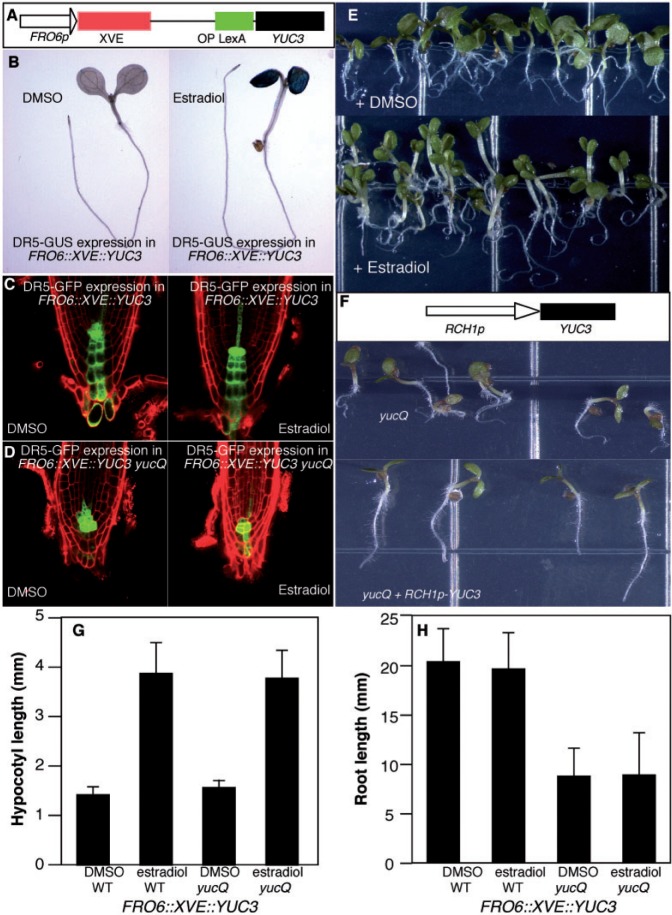Fig. 4.
Shoot-produced auxin is not sufficient for rescuing the root defects of yucQ. (A) A construct for inducible expression of YUC3 in Arabidopsis shoots. The synthetic transcription factor XVE is under the control of a shoot-specific promoter FRO6p. Upon estradiol treatment, YUC3 is specifically expressed in the shoots. (B) Overexpression of YUC3 in wild-type shoots causes auxin overproduction in shoots. Note that the estradiol-treated seedling has long hypocotyls, epinastic cotyledons and elevated expression of the auxin reporter DR5–GUS in cotyledons. (C) DR5–GFP expression in roots in the mock-treated plants in the wild-type background and in the estradiol-treated plants. Although induction of YUC3 expression in shoots caused auxin overproduction in shoots, the expression of DR5–GFP was similar to that of the mock-treated plants. (D) DR5–GFP levels were reduced in yucQ, and overexpression of YUC3 in shoots did not lead to an increase in expression of DR5–GFP in roots. (E) Overproduction of auxin in shoots in yucQ did not rescue the root defects of yucQ. (F) The root phenotypes of yucQ (3 days old) were reversed when YUC3 was expressed using a root-specific promoter RCH1p. (G) Hypocotyl length of wild-type/FRO6::XVE::YUC3 and yucQ/FRO6::XVE::YUC3 plants treated with DMSO (dimethylsulfoxide) or estradiol. (H) The effects of induction of YUC3 expression in wild-type/FRO6::XVE::YUC3 and yucQ/FRO6::XVE::YUC3 plants on root length.

